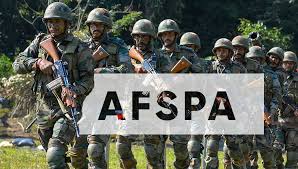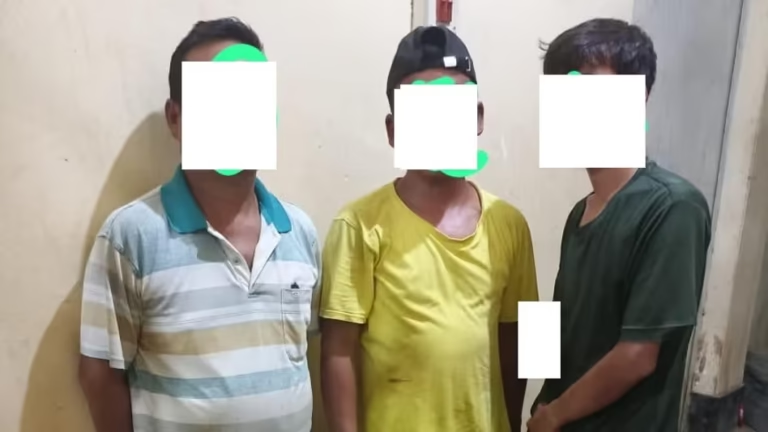Centre and Manipur Government to Review Ethnic Violence: A Step Toward Peace
Summary:
The Centre and Manipur Government are set to review the ongoing ethnic violence in the state. Despite efforts for peace, tensions persist. The review aims to assess the current security situation, focusing on restoring stability and addressing the needs of the affected communities.
Unrest in Manipur: Ethnic Violence and Its Ongoing Impact
When it comes to the complex social fabric of Manipur, one of the most pressing concerns today is the ongoing ethnic violence. Ethnic clashes in the region have been a recurring issue, leading to significant loss of life, property, and peace. Recently, the Centre and the Manipur Government have announced a joint review of the situation, as part of their continued efforts to find a lasting solution. But why has this violence continued, and what are the underlying factors driving this unrest?
Historical Context: What Sparked the Ethnic Clashes in Manipur?
Manipur has long been a melting pot of various ethnic groups, each with its own unique history, culture, and identity. These groups include the Meitei, Naga, Kuki, and several others, each having coexisted for centuries. However, tensions over land, political power, and autonomy have frequently escalated into conflict.
The region’s colonial history, with its arbitrarily drawn borders, only exacerbated existing rivalries. After India’s independence, these simmering tensions often boiled over into ethnic violence, with clashes breaking out sporadically. Issues of identity, tribal affiliations, and territorial control have all played major roles in fueling this conflict.
The Role of Land and Resources in Ethnic Conflicts
In Manipur, land is more than just property—it is deeply tied to identity and power. Tribal groups claim specific regions as their ancestral lands, and any threat to their territorial integrity is seen as an existential crisis. This is particularly true in areas with overlapping claims, where ethnic communities often find themselves in conflict over resources.
Moreover, the state’s hilly regions, rich in natural resources, have become flashpoints for disputes. Control over these areas offers not just economic power, but also a sense of cultural sovereignty. These territorial disputes are often compounded by the perception that certain communities are favored by the government, leading to widespread dissatisfaction and resentment.
Government Response: Why Has Peace Been Elusive?
Over the years, the Indian government, both at the state and central levels, has attempted several initiatives to quell the violence. However, many of these efforts have been piecemeal or short-lived, failing to address the root causes of the conflict. Temporary ceasefires or peace talks often collapse due to the deep mistrust between the ethnic groups and the perceived inaction of the authorities.
The ethnic nature of the conflict complicates matters. Unlike political insurgencies, which can sometimes be resolved through negotiations or territorial concessions, ethnic violence stems from deep-seated issues of identity, culture, and history. The sense of “us versus them” is much harder to dismantle, especially in a region where access to resources and political representation is seen as a zero-sum game.
What is the Centre and Manipur Government’s New Strategy?
A Review of the Situation
The Centre and the Manipur Government have announced a comprehensive review of the security situation in the state. This involves assessing the current state of violence, understanding the grievances of the affected communities, and working toward a roadmap for peace.
Focusing on Law and Order
One of the key priorities is to restore law and order in the region. This includes deploying additional security forces, increasing surveillance in sensitive areas, and ensuring that violence does not spread further. The government is also focusing on rebuilding trust between communities, with local leaders playing a crucial role in mediation efforts.
Dialogue and Reconciliation
In addition to restoring order, the review will focus on fostering dialogue between warring groups. This is crucial because, without meaningful conversations that address the underlying issues, any peace effort will only be temporary. The government has made it clear that any peace process must involve all stakeholders, including community leaders, civil society groups, and local politicians.
The Human Toll of Ethnic Violence: Stories from the Ground
Beyond the political implications, it’s important to remember the human cost of this violence. Families have been torn apart, homes destroyed, and entire villages displaced. People living in conflict zones live in a constant state of fear, unsure whether they will wake up to another day of peace or violence.
Children have particularly borne the brunt of the conflict, with schools closing down and futures becoming uncertain. Women, too, face unique challenges in conflict zones, as they are often targeted in gender-based violence, used as tools to assert dominance by warring factions.
Restoring Normalcy: What Needs to Be Done?
Rebuilding Trust
Restoring normalcy in Manipur will require more than just a cessation of violence. Trust must be rebuilt between the different ethnic groups, and between the people and the government. This can only be achieved through transparency, inclusivity, and a commitment to addressing the grievances of all affected communities.
Economic Development
Another critical aspect of restoring peace is economic development. The lack of opportunities, particularly in remote areas, exacerbates the conflict, as young people, frustrated by unemployment, are often drawn into ethnic militancy. Investment in infrastructure, education, and job creation will go a long way in creating stability.
Long-term Peacekeeping Initiatives
To prevent future outbreaks of violence, long-term peacekeeping initiatives are essential. This includes creating peace councils that involve representatives from all ethnic groups, setting up early warning systems to detect tensions before they escalate, and ensuring that law enforcement agencies are impartial in their dealings.
Challenges Ahead: What Could Hinder Progress?
Mistrust Between Communities
The deep mistrust between communities in Manipur is one of the biggest hurdles to lasting peace. Many ethnic groups believe that the government favors one group over another, leading to resentment. Overcoming this mistrust will require an impartial approach from the authorities, ensuring that no group is left behind.
Political Interference
Political interference is another major challenge. Local politicians, often aligned with specific ethnic groups, have been known to fan the flames of conflict for their own gain. Ensuring that the peace process remains free from political meddling is crucial for its success.
The Role of Militants
Several armed militant groups operate in Manipur, and their involvement complicates the peace process. These groups, often aligned with specific ethnic communities, resist government efforts to impose control, and any peace deal will have to involve negotiations with these factions as well.
Conclusion: A Roadmap for Peace
Manipur’s ethnic violence is a complex issue, deeply rooted in the region’s history, culture, and politics. Solving it will require a multifaceted approach—one that addresses not only the immediate security concerns but also the long-standing grievances of the people. The Centre and Manipur Government’s review of the situation is a step in the right direction, but it will take sustained effort, dialogue, and goodwill from all sides to bring lasting peace to the region.
FAQs
- What is the cause of ethnic violence in Manipur?
Ethnic violence in Manipur is driven by disputes over land, resources, and political power between different ethnic groups. - What is the government doing to resolve the violence?
The government is reviewing the security situation, engaging in peace talks with community leaders, and restoring law and order. - How has the violence affected daily life in Manipur?
The violence has disrupted daily life, with schools closing, businesses shutting down, and people living in constant fear. - What are the long-term solutions to ethnic violence in the region?
Long-term solutions include fostering dialogue between ethnic groups, investing in economic development, and rebuilding trust. - Can economic development help resolve the conflict?
Yes, providing opportunities through economic development can reduce frustrations and prevent young people from joining militant groups.



